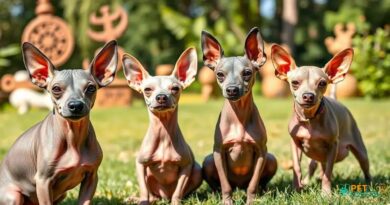What is Zoomorfismo
What is Zoomorphism?
Zoomorphism is a fascinating concept that refers to the attribution of animal characteristics or qualities to non-animal entities, including humans, objects, and even abstract ideas. This term is derived from the Greek words “zoo,” meaning animal, and “morph,” meaning form or shape. In various cultures and artistic expressions, zoomorphism plays a significant role in how we perceive and represent the world around us, often blurring the lines between human and animal traits.
Historical Context of Zoomorphism
The roots of zoomorphism can be traced back to ancient civilizations, where animals were often revered and depicted in art, mythology, and religion. For instance, in Egyptian mythology, gods were frequently represented with animal heads, symbolizing their divine attributes. This historical context highlights the importance of animals in human culture and how their traits have been used to convey complex ideas and emotions.
Zoomorphism in Literature
In literature, zoomorphism is a powerful literary device used to create vivid imagery and deepen character development. Authors often employ zoomorphic descriptions to imbue characters with animalistic qualities, enhancing their personalities and motivations. For example, a character described as “sly as a fox” or “brave as a lion” evokes specific traits associated with those animals, allowing readers to form a more nuanced understanding of the character’s nature.
Artistic Representations of Zoomorphism
Artists throughout history have utilized zoomorphism to explore the relationship between humans and animals. From ancient sculptures to modern paintings, zoomorphic art often reflects societal values, beliefs, and the interconnectedness of life. This artistic approach invites viewers to reconsider their perceptions of both the animal kingdom and humanity, fostering a deeper appreciation for the natural world.
Zoomorphism in Modern Media
In contemporary media, zoomorphism continues to thrive, particularly in animation, film, and advertising. Characters like talking animals in animated films or mascots representing brands often embody zoomorphic traits, making them relatable and engaging for audiences. This technique not only captures attention but also creates emotional connections, as viewers may identify with the animal characteristics portrayed.
The Psychological Aspects of Zoomorphism
Psychologically, zoomorphism can influence how individuals perceive themselves and others. By attributing animal traits to people, we may unconsciously reinforce stereotypes or biases. For instance, labeling someone as “cat-like” might imply aloofness or independence, while “dog-like” could suggest loyalty and friendliness. Understanding these associations can help us navigate social interactions and challenge preconceived notions.
Zoomorphism in Branding and Marketing
In branding and marketing, zoomorphism serves as a strategic tool to create memorable identities. Companies often choose animal mascots or incorporate animal traits into their branding to evoke specific emotions and associations. For example, a brand using a lion as its symbol may convey strength and courage, appealing to consumers’ desires for reliability and power in their products.
Ethical Considerations of Zoomorphism
While zoomorphism can be a creative and effective tool, it also raises ethical questions regarding the representation of animals and their treatment in society. The anthropomorphizing of animals can lead to misunderstandings about their behaviors and needs, potentially impacting conservation efforts and animal welfare. It is essential to strike a balance between creative expression and responsible representation.
Zoomorphism in Cultural Practices
Various cultures incorporate zoomorphism into their practices, rituals, and folklore. From totem poles in Indigenous cultures to the use of animal motifs in traditional textiles, these representations serve to connect communities with their heritage and the natural world. Understanding these cultural practices enriches our appreciation for the diversity of human expression and the significance of animals in our lives.
The Future of Zoomorphism
As society evolves, so does the concept of zoomorphism. With advancements in technology and changing cultural narratives, we may see new interpretations and applications of zoomorphism in various fields. Whether in art, literature, or marketing, the enduring appeal of zoomorphism lies in its ability to bridge the gap between the human experience and the animal kingdom, fostering empathy and understanding.



